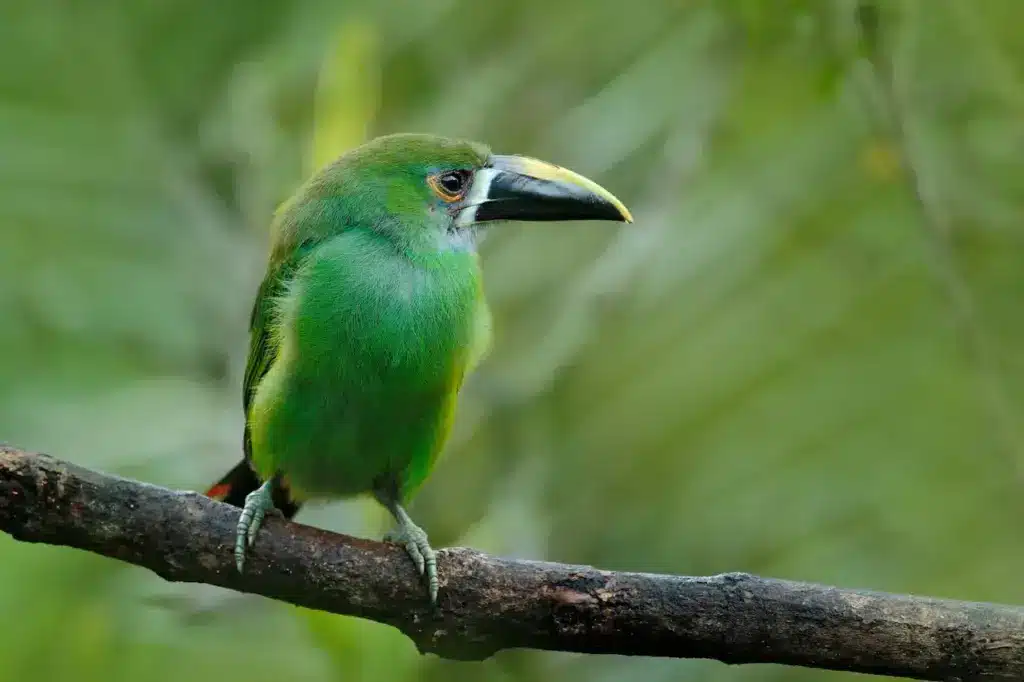The Blue-throated Toucanets (Aulacorhynchus caeruleogularis) is found in the mountain cloud forests of Costa Rica and western Panama – with an altitudinal range from 2,500 ft (762m) to 7,600 ft (2316m) above sea level.
One subspecies is currently recognised: Aulacorhynchus caeruleogularis maxillaris (Griscom, 1924).
Formerly, it was considered to be a subspecies of the Emerald Toucanet, in which case it was given the scientific name of Aulacorhynchus prasinus caeruleogularis.
[ez-toc]

However, based primarily on morphology and plumage differences (it is the only member of the atrogularis group with a blue throat), most authorities consider it now a separate species.
They are fairly long-lived with a lifespan around 20 years.
Blue-throated Toucanets Description
Adults
The Blue-throated Toucant’s plumage is mostly light and dark shades of green; except for the blue throat, and the chestnut-colored tail tip and crissum (area under the base of the tail).
Males and females look alike, except the female generally has a smaller bill and is overall smaller in size.

Juveniles
Immature Blue-throated Toucanet are born blind and naked. They do not open their eyes until they are around 25 days old, and they are completely covered in feathers by around 35 days. Most immature Blue-throated Toucanet do not leave their nest until they are about 45 days old. When they leave their nest, their bills are alike to their parents in color and shape, but still smaller in size.
Similar Species
Blue-throated Toucanet are easily distinguished from Emerald Toucanets by their distinctive sapphire-blue throats.
Alternate (Global) Names
Danish: Blåstrubet Tukanet … French: Toucanet à gorge bleue … Italian: Tucanetto golablu … Norwegian: Blåstrupetukan … Polish: pieprzojad niebieskogardly, pieprzojad niebieskogard?y … Russian: ???????????? ??????? … Slovak: tukaník modrohrdlý … Spanish: Tucancillo Verde, Tuncancillo verde
Blue-throated Toucanets Nesting / Breeding
Blue-throated Toucanet are cavity nesters, and will often take advantage of abandoned nest holes of woodpeckers. Their nests can be up to 70 ft (21m) above the ground.
The average clutch consists of 2 – 4 white eggs. The eggs have about a 15-day incubation period.
Captivity
Blue-throated Toucanet are quite popular as pets due to their small size and quiet nature, which makes them suitable for apartment living (if allowed to roam around throughout a good part of the day).
Hand-raised birds are typically also very affectionate and playful. In fact, they are said to be as cuddly as cockatoos, and are quite trainable as well.
Calls / Vocalizations
Its call is described as a loud and high-pitched (occasionally low-pitched) rrrip, rrrip, rrrip, rrrip,.
- Sound Recordings



